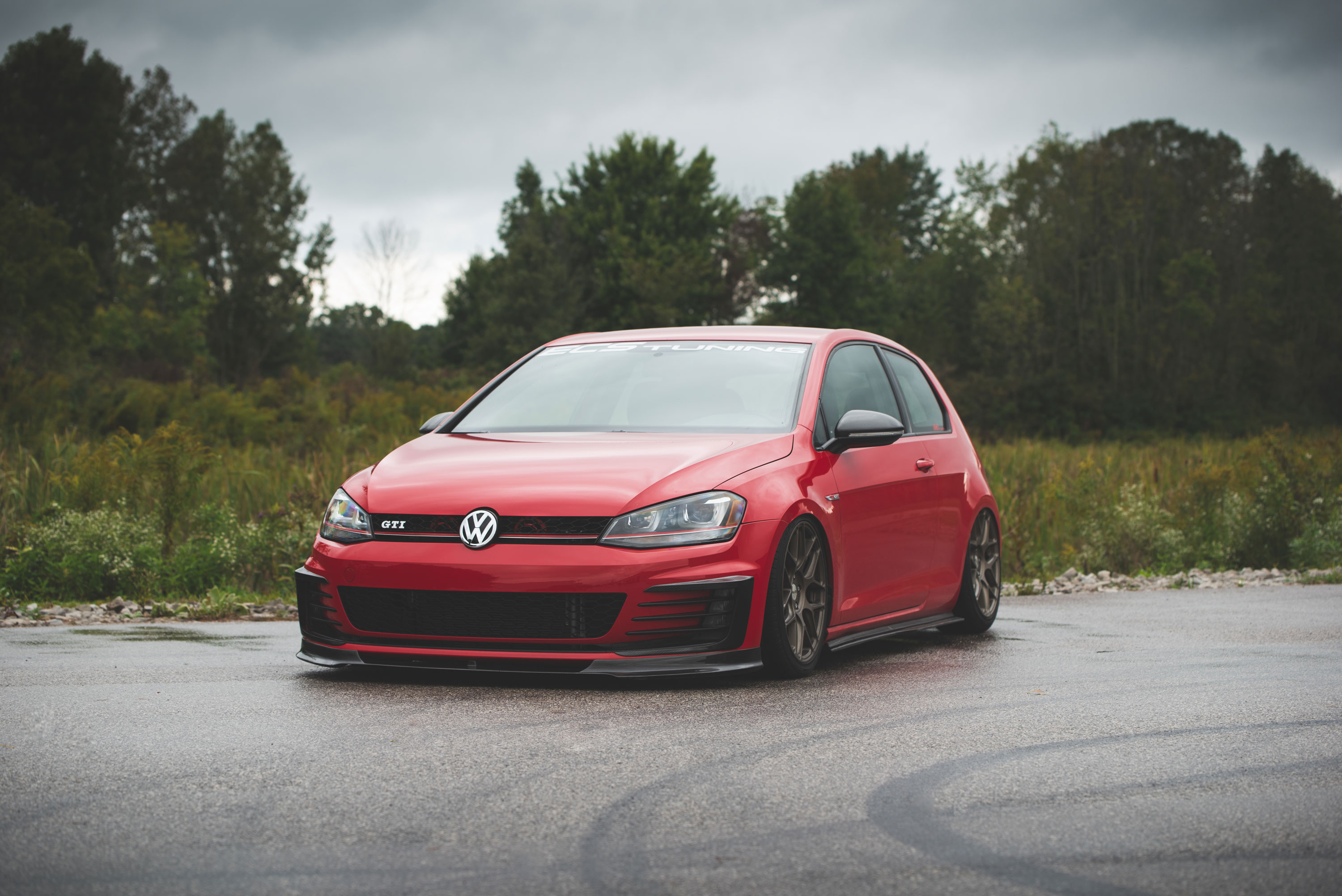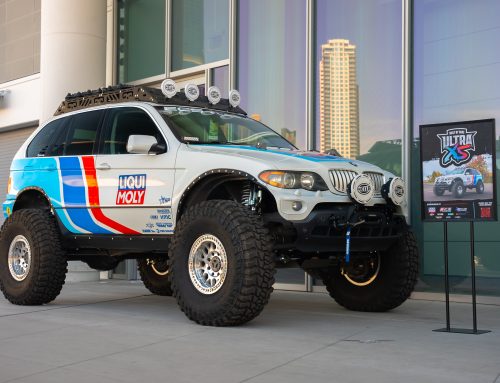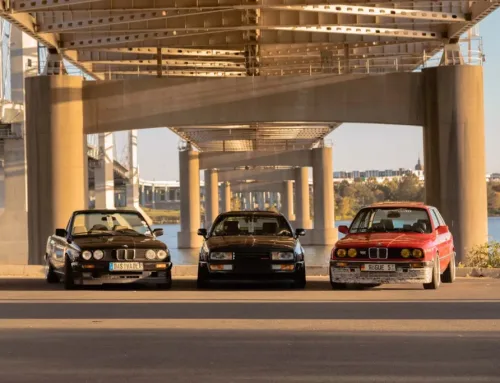There are three (safe) ways to achieve a lowered ride height and handling improvements on your car. Depending on your budget and goals, one way may be better for you than the others. For the budget minded person or someone just looking for a slight change in appearance and handling, lowering springs are perfect. If you need something more aggressive with adjustability for height and damping, coilovers are your best bet, which is another rabbit hole. Lastly, you have the most dynamic system of the three in air ride suspension. Specifically, Air Lift Performance is the leading manufacturer of air suspension and incredibly well-loved in the community. Air suspension, however, is fairly complex. We’re here to walk you through it now that we have full kits available for almost every European car you’d want to air out for a show, daily drive, or even compete with on the track.
What is Air Suspension?
I’m not going to patronize anyone here. If you are looking at air suspension, you know it is a system that allows on-the-fly ride height adjustments with inflatable air bags instead of traditional coil springs. Those bags are controlled by a management system that allows them to be inflated with an air tank and compressor, which increases or decreases pressure depending on what you need to do. The anatomy, however, is something you need to know when buying your first air ride kit since everything is so customizable.
Air Ride Components
Struts: these are exactly like traditional struts and shocks for your car, but valved to handle an extremely lowered ride height and rapid changes.
Bags: air bags replace the springs in an air setup and are pressurized to a set PSI depending on your command with air to raise the ride height, or deflated to lower the ride height.
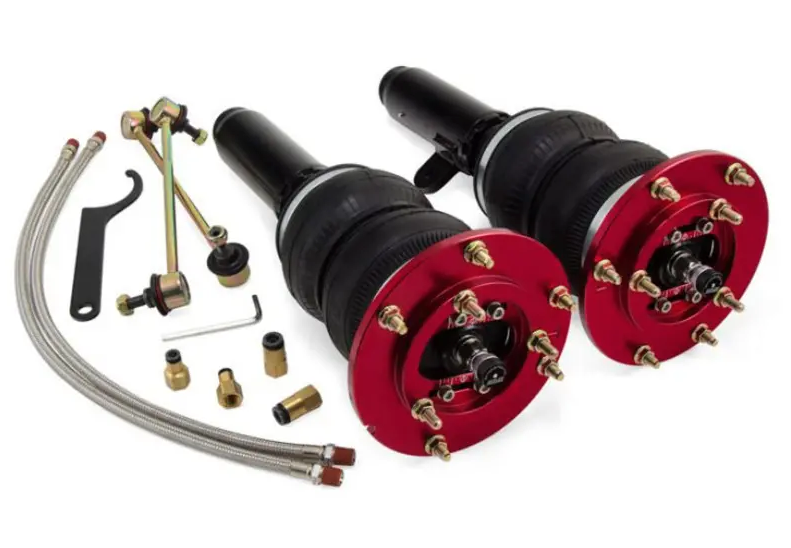
Compressor: the air compressor is tied into your electrical system and powered by the battery. It works just like a compressor on an air tank in a shop by compressing air to power tools, or in this case, inflate your bags.
Air tank: this is where the air is pressurized. Think of it as a reservoir, like your coolant reservoir, that is your available air supply to pressurize the bags to inflate them for raising the ride height.
Air lines: these are the lines that need to run from the tank to the bags themselves that carry the air for inflation. Pretty straight forward.
Management: everything needs to be controlled. From basic, manual, switch-based systems to digital devices, the management allows you to change height and bag pressure at the touch of a button or flip of a switch. More advanced systems can link with your smartphone and be controlled remotely, which is super cool.
With an understanding of the components of an air system, you are ready to begin putting a kit together. There are a few options to configure your setup and it gets a bit confusing. Follow along and we will explain everything.
Management options include the most basic setups all the way to some really fancy stuff. Your options are:
3H: The most advanced management system from Air Lift, 3H management allows for height/pressure adjustments and include height sensors that give the system the ability to automatically adapt to vehicle load changes. This system will let you control the settings through Bluetooth with your iPhone or Android, includes an integrated manifold, offers five custom presets, has Anti-cross loading and Axle Equalization, and more. This system does everything an Air Lift system can do.
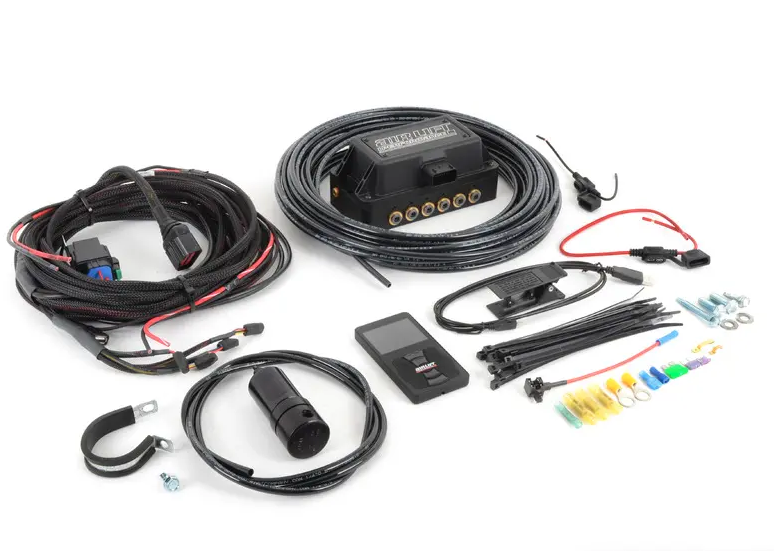
3P: Slightly less costly and less advanced, but still capable, the 3P management system is nearly the same as the 3H system, but doesn’t include Height and Pressure control, doesn’t have height sensors, and won’t automatically adjust for cross loads. Other than that, the system is the same as the 3H version.

Autopilot V2: This pressure-based control system gives you easy installation and control, is easy to expand for more compressors, and work with any air tank/compressor setup available. The eight presets available make it incredibly competent, but it is not a ‘smart’ system like the 3H/3P system. It only adjusts for height based on your inputs into the controller. No sensors, no Bluetooth, and no ‘show mode’ means it’s perfect for someone who wants the function of a digital management system without all the extra showy fluff that you may not need.

Manual: Lastly, manual paddle valve controls are the most basic way to control your air ride. The benefits of a manual system are the cost, simplicity, lack of need for electronics, and works with literally any car. If you are looking for the most cost-effective way to control air ride, this is your setup. It can always be upgraded in the future, but this system is simple and effective.
Air Tanks:
There are dozens of tanks available, but the best options for you will depend on a few factors: available space, vehicle weight, and cost. If you have a larger/heavier vehicle, you will need more volume and thus a larger tank. The benefits of more volume, either through a large tank or multiple smaller ones, is that you have more air to use between compressor fills. However, with a single compressor, it will take much longer to fill when you run out of stored compressed air. Really, whatever you have the space to use and budget to purchase is the best setup for your vehicle. Just remember, more volume means longer fill times, so you might want to consider multiple compressors in that case.
Compressors:
Compressors are rated by their CFM, duty cycle, and horsepower. Whether you use a high-powered compressor or multiple low-power compressors, the effects will be the same, so that comes down to personal preference. What really matters is the duty cycle and the CFM. Allow us to explain.
Duty Cycle:
The duty cycle is how long the compressor can operate under load versus operating under no load. Basically, that means how efficient the compressor is. A duty cycle of 100% can be run continuously, with load or without. If you plan on playing with your air a bunch at shows or while driving, opt for a 100% duty cycle compressor. A 50% duty cycle compressor will have to rest for 50% of its run time, otherwise, you risk burning it out prematurely. However, lower duty cycle compressors are more affordable.
CFM:
The cubic feet per minute rate at which your compressor can fill a tank is the CFM rating. Basically, how quickly your compressor can fill the tank. This rating will be listed as a CFM under load and a CFM at no load. For instance, a tank at 0psi can be filled at 4CFM, but at 100psi it may only flow 2CFM because the compressor needs to fight against the existing pressure in the tank.
This should be a basic explanation that can help you set up your air system. If you are trying to go for a basic setup, all the information is there. However, if you are looking to build an intense custom setup that is dressed to the nines, we suggest you speak with one of our knowledgable sales representatives to help ensure your system is exactly what you need it to be and will be perfect for your application. Remember, an air system can be as complex or as simple as you want, it can be flashy and incredibly capable with tons of features, or it can serve the rudimentary purpose of adjustability on the fly with only what you need to get the job done. What your system looks like will be up to you, so make sure you follow this explanation and speak with a representative for that perfect setup.
Shop All Air Lift Performance Complete Kits


